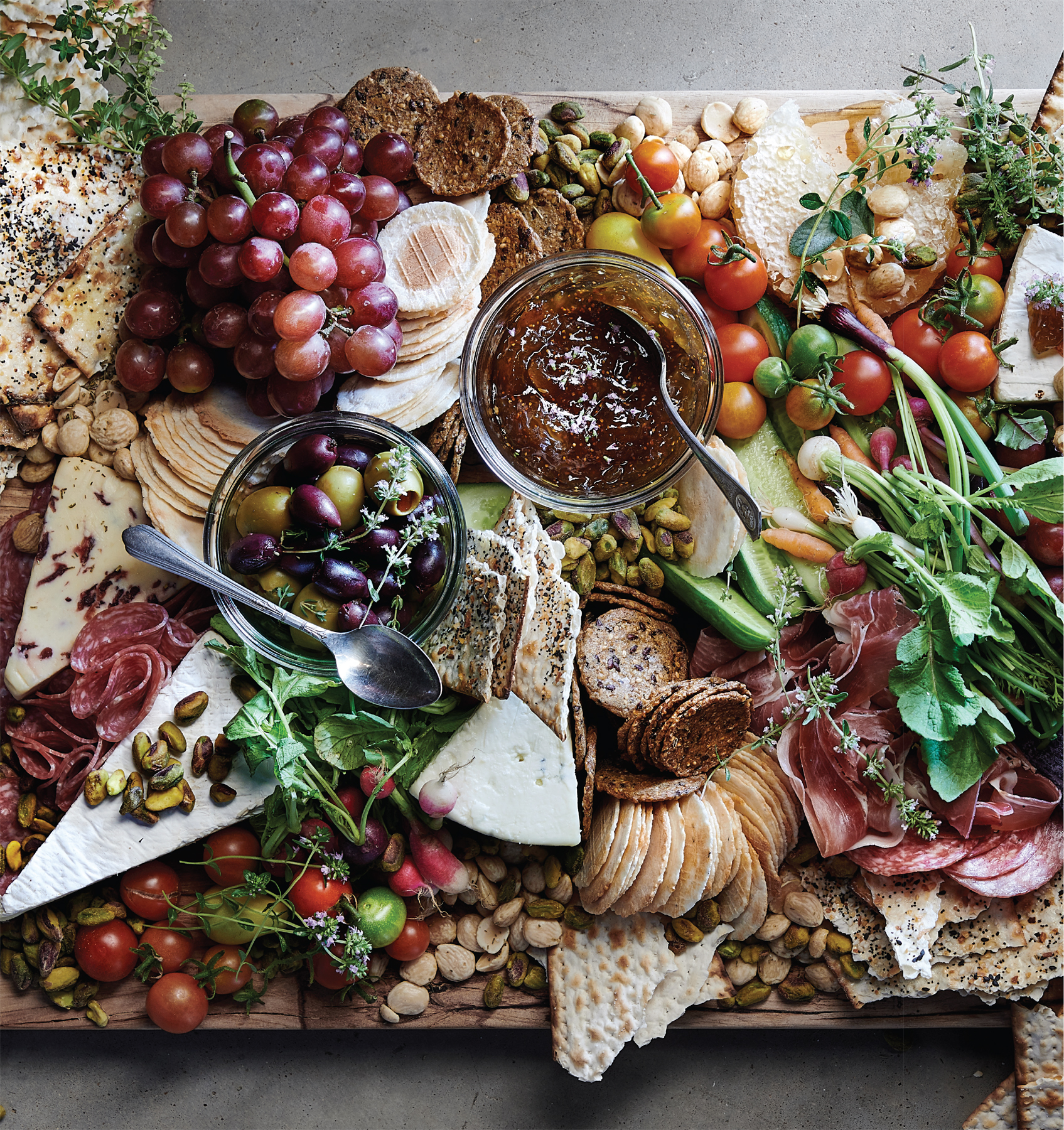charcuterie board
STEP 1 | cheeses
Select cheeses with varying textures to give your board balance and visual interest. A combination of soft, firm, and hard cheeses is a great starting point. From there, it’s helpful to incorporate a few options that are easy to dip or scoop onto bread or crackers, in addition to harder cheeses that require a cheese knife.
Soft cheese: Brie, ricotta, feta, panela, blue cheese/Roquefort, Camembert
Firm cheese: Cheddar, Gruyère, Gouda, Monterey Jack, Edam
Hard cheese: Pecorino Romano, aged Gouda, Parmesan
STEP 2 | meats
Utilize different types and cuts of meat to create dimension and movement on the board. Thinly shaved prosciutto and medium-sliced salami are easiest to fold and tuck between cheeses. Pair the meats with your preferred cheese or garnish.
Soppressata salami (whole black peppercorns and garlic)
Calabrese salami (cayenne pepper makes it spicy)
Prosciutto
STEP 3 | crackers
Crackers also contribute to the texture and balance of the board. It’s typically best to incorporate the same number of cracker varieties as cheeses. A selection of seeded crackers, thin water crackers, and sheets of lavash that can be torn and spread out across the board to make for a good foundation.
STEP 4 | accoutrements
Add fresh color to your board by incorporating small flowering herbs (like fresh thyme, mint, basil, and lavender), and vegetables to garnish, such as radishes and cherry tomatoes. Fresh honeycomb, seasonal fruits, sauces, and nuts help anchor and bring a little life to your board.
